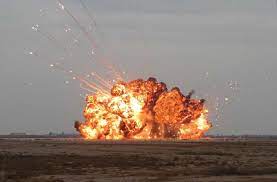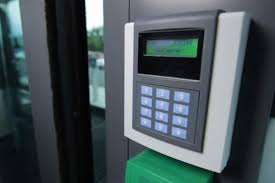Explosives: Understanding the Mechanics and Dangers
Explosives have always held a certain fascination for mankind. From their use in construction and mining to their portrayal in action movies, explosives have become a symbol of power and destruction. However, it is crucial to understand that explosives are not toys or tools to be taken lightly. They are highly dangerous substances that require careful handling and expertise.
So, what exactly are explosives? In simple terms, explosives are materials that undergo rapid chemical reactions, resulting in the release of a tremendous amount of energy in the form of heat, light, shockwaves, and gases. This sudden release of energy creates an explosion.
There are various types of explosives classified based on their composition and intended use. Some common examples include dynamite, TNT (Trinitrotoluene), C-4 plastic explosive, ammonium nitrate-based fertilizers, and black powder. Each type has its own specific properties and uses.
Explosives find applications in a wide range of industries such as mining, construction, demolition, military operations, fireworks manufacturing, and even scientific research. They play a vital role in shaping our modern world by facilitating activities like tunneling through mountains for transportation networks or controlled demolitions for urban development projects.
However, it is essential to recognize the potential dangers associated with explosives. Mishandling or improper storage can lead to catastrophic accidents causing loss of life and property damage. It is crucial to follow strict safety protocols when dealing with these volatile substances.
One primary concern with explosives is their sensitivity to heat, friction, impact, or electrical currents. Even a small spark can trigger an explosion if the conditions are right. Therefore, proper storage in designated areas away from potential ignition sources is critical.
Transportation of explosives also requires special precautions due to their inherent risks. Vehicles carrying explosive materials must adhere to strict regulations regarding packaging standards and safety measures during transit.
In recent years, there has been an increased focus on the development and implementation of advanced explosive detection technologies. These technologies aim to enhance security measures at airports, public venues, and critical infrastructure sites. By utilizing techniques such as X-ray scanners, trace detection systems, and canine units trained to sniff out explosive materials, authorities can detect potential threats and prevent acts of terrorism.
Public awareness about explosives is equally important. Educating individuals about the dangers associated with these materials can help prevent accidents and promote responsible behavior. It is crucial to report any suspicious activities or unattended packages that may pose a threat.
In conclusion, explosives are powerful tools that require expertise and caution in their handling. While they have significant applications in various industries, it is essential to prioritize safety at all times. Understanding the mechanics and dangers of explosives enables us to utilize them responsibly while minimizing risks to ourselves and others.
7 Essential Tips for Handling Explosives Safely
- Ensure that all explosives are stored in a secure, dry place away from any sources of heat or flame.
- Never smoke near explosives, as even a spark can cause an explosion.
- Always wear protective clothing and safety gear when handling explosives.
- Be aware of the environment around you when using explosives and ensure that it is safe to do so without putting yourself or others at risk.
- Follow all instructions for use carefully and never modify or tamper with the explosive material in any way.
- Dispose of explosives safely and properly according to local regulations and laws .
- Make sure to have appropriate emergency response plans in place in case of an accident involving explosives .
Ensure that all explosives are stored in a secure, dry place away from any sources of heat or flame.
Safety First: Storing Explosives Securely
When it comes to handling explosives, safety should always be the top priority. One crucial tip to remember is to ensure that all explosives are stored in a secure, dry place away from any sources of heat or flame.
Explosives are highly sensitive to heat, friction, and sparks. Even the smallest ignition source can lead to a potentially catastrophic explosion. That’s why proper storage is essential to prevent accidents and protect lives and property.
To store explosives safely, it is crucial to have a designated storage area that meets specific requirements. This area should be secure, well-ventilated, and away from any potential sources of ignition such as open flames, electrical equipment, or hot surfaces.
Ideally, the storage area should be constructed with fire-resistant materials and equipped with appropriate safety measures like fire extinguishers and sprinkler systems. It should also have controlled access to prevent unauthorized individuals from entering.
Additionally, keeping the storage area dry is vital. Moisture can degrade the stability of explosives over time, making them more prone to accidental detonation or reduced effectiveness. Using moisture-absorbent materials or dehumidifiers can help maintain optimal conditions for storage.
Labeling and organizing stored explosives is another important aspect of safe storage. Clearly mark each container with information about its contents and any necessary handling instructions. This ensures that everyone handling the explosives knows what they are dealing with and can take appropriate precautions.
Regular inspections of the storage area are essential to identify any potential hazards or signs of deterioration. Check for leaks in containers or signs of damage that could compromise the integrity of the explosives.
Remember that storing explosives securely not only protects those who handle them but also safeguards surrounding areas from potential harm. By following this simple tip of keeping explosives in a secure, dry place away from any sources of heat or flame, we contribute to a safer environment for everyone involved.
Always prioritize safety when dealing with explosives. By practicing responsible storage and handling, we can minimize the risks associated with these powerful substances and ensure the well-being of ourselves and those around us.
Never smoke near explosives, as even a spark can cause an explosion.
The Dangers of Smoking Near Explosives: A Spark Can Cause Devastation
Smoking is a habit that many people enjoy, but it becomes an incredibly dangerous activity when done near explosives. The reason for this is simple yet crucial to understand: even a tiny spark from a cigarette can ignite the explosive material, leading to a potentially catastrophic explosion.
Explosives are highly sensitive substances that undergo rapid chemical reactions, releasing an immense amount of energy. These reactions can be triggered by various factors, including heat and sparks. When someone smokes near explosives, they introduce an unnecessary risk that could have severe consequences.
Cigarettes produce heat and embers as they burn. These embers can travel through the air and land on nearby surfaces or materials. If one of these embers were to come into contact with an explosive substance, it could ignite it instantly. The result would be an explosion capable of causing significant damage to property and endangering lives.
To prevent such incidents, it is vital to strictly adhere to safety protocols and regulations when handling explosives. Smoking should never be allowed in areas where explosives are present or being stored. Designated smoking areas should always be located far away from any explosive materials.
Additionally, individuals working with or around explosives must be educated about the potential risks associated with smoking in these environments. They should understand that even a seemingly harmless action like lighting a cigarette can have disastrous consequences.
Maintaining a smoke-free environment around explosives is not only crucial for personal safety but also for the safety of others nearby. It ensures that everyone involved in handling or working around explosives can focus on their tasks without unnecessary distractions or risks.
In conclusion, smoking near explosives is an extremely hazardous practice that should never be taken lightly. The tiniest spark from a cigarette has the potential to cause devastating explosions. By strictly adhering to safety protocols and maintaining smoke-free environments around explosive materials, we can protect ourselves and those around us from unnecessary danger.
Always wear protective clothing and safety gear when handling explosives.
When it comes to handling explosives, safety should always be the top priority. One crucial tip to remember is to wear protective clothing and safety gear at all times.
Explosives are highly volatile substances that can cause severe injuries or even fatalities if mishandled. Wearing appropriate protective clothing and safety gear helps minimize the risks associated with working with these hazardous materials.
Protective clothing typically includes flame-resistant coveralls or suits made from materials that can withstand heat and flames. These garments provide a barrier between the explosive material and the wearer’s skin, reducing the risk of burns or other injuries.
Safety gear, on the other hand, may include items such as safety goggles, gloves, helmets, and steel-toed boots. Safety goggles protect the eyes from potential debris or particles that may be released during an explosion. Gloves help protect hands from chemicals or sharp objects while handling explosives. Helmets provide head protection in case of falling objects or impact, while steel-toed boots offer foot protection against heavy objects.
By wearing proper protective clothing and safety gear, individuals working with explosives can significantly reduce their vulnerability to potential hazards. These measures act as a shield against burns, cuts, impacts, and other injuries that may occur during handling or accidental detonation.
It is crucial to ensure that all protective clothing and safety gear are in good condition before starting any work involving explosives. Regular inspections should be conducted to check for any signs of wear and tear or damage. Faulty equipment should be replaced immediately to maintain optimal protection levels.
In addition to wearing protective clothing and safety gear, it is essential to follow established safety protocols when handling explosives. This includes receiving proper training on safe handling techniques, storing explosives in designated areas away from ignition sources, and following strict transportation guidelines.
Remember: Safety is not an option when it comes to working with explosives; it is a necessity. By always wearing appropriate protective clothing and safety gear, individuals can minimize the risks associated with handling these volatile substances and ensure their well-being.
Be aware of the environment around you when using explosives and ensure that it is safe to do so without putting yourself or others at risk.
Be Mindful of Your Surroundings: Safety First When Handling Explosives
When it comes to handling explosives, safety should always be the top priority. One crucial tip to remember is to be aware of the environment around you before using explosives and ensure that it is safe to do so without putting yourself or others at risk.
Explosives possess immense power, and their impact can extend beyond the immediate blast zone. That’s why it’s essential to assess your surroundings thoroughly before initiating any explosive activity. Here are some key considerations:
- Clear the Area: Ensure that there are no people, animals, or valuable property within the potential danger zone. Keep a safe distance from buildings, vehicles, power lines, and other structures that could be affected by the explosion.
- Check for Flammable Materials: Take note of any flammable materials nearby that could ignite or exacerbate the impact of an explosion. Gasoline, oil, chemicals, dry vegetation, or other combustible substances should be kept away from the explosive area.
- Evaluate Ventilation: Explosives can produce toxic gases and fumes when detonated. Make sure there is adequate ventilation in the area to disperse these potentially harmful byproducts.
- Consider Weather Conditions: Weather conditions can significantly affect the behavior of explosives. Wind direction and speed are particularly important factors to consider as they can influence how blast waves travel and disperse debris. Avoid using explosives during adverse weather conditions such as heavy rainstorms or strong gusts of wind.
- Plan for Containment: Prepare a proper containment system if necessary for specific explosive materials or applications. This may involve using blast-resistant containers, sandbags, or other appropriate measures to minimize collateral damage.
Remember that these tips apply not only to professionals working with explosives but also to individuals who might handle them in certain circumstances—such as farmers using dynamite for land clearing or enthusiasts engaging in controlled pyrotechnic displays.
By being mindful of your surroundings and taking necessary precautions, you can ensure the safety of yourself and those around you. Prioritizing safety when using explosives is crucial for preventing accidents, minimizing damage, and preserving lives.
Always seek proper training and follow established guidelines and regulations when working with explosives. When in doubt, consult experts or authorities to ensure that your actions align with best practices and legal requirements.
Remember: Safety should never be compromised when dealing with the immense power of explosives.
Follow all instructions for use carefully and never modify or tamper with the explosive material in any way.
Handling Explosives: Safety First
When it comes to dealing with explosive materials, safety should always be the top priority. One crucial tip to remember is to follow all instructions for use carefully and never modify or tamper with the explosive material in any way.
Explosives are designed and manufactured with specific guidelines and safety measures in mind. These instructions are put in place to ensure the proper handling, storage, and usage of these highly volatile substances. Deviating from these instructions can have severe consequences.
Modifying or tampering with explosives can lead to unpredictable reactions and increase the risk of accidents. It’s important to remember that even a slight alteration in the composition or structure of an explosive can significantly change its behavior, making it highly dangerous.
By strictly adhering to the provided instructions, you can minimize risks and ensure your safety as well as that of those around you. These instructions often include details about proper storage conditions, handling procedures, transportation guidelines, and recommended protective equipment.
Additionally, it’s essential to seek proper training and certification before working with explosive materials. Training programs provide valuable knowledge about safe practices, emergency procedures, and risk assessment. This knowledge equips individuals with the necessary skills to handle explosives responsibly.
Remember, even if you are experienced in working with explosives, each type may have its own specific set of instructions that must be followed diligently. Ignoring or neglecting these instructions can have severe consequences.
So, whether you’re involved in mining operations, construction projects, or any other industry that requires working with explosives – always prioritize safety by following all instructions for use carefully and never modifying or tampering with explosive materials in any way. By doing so, you contribute to a safer working environment for yourself and those around you.
Dispose of explosives safely and properly according to local regulations and laws .
Dispose of Explosives Safely: Protecting Lives and the Environment
When it comes to handling explosives, safety should always be the top priority. But what happens when you no longer need these potentially dangerous materials? Disposing of explosives requires careful consideration to ensure the well-being of both people and the environment.
Local regulations and laws play a crucial role in dictating how explosives should be disposed of. These guidelines are in place to protect individuals from accidents and to prevent any adverse effects on the surrounding ecosystem.
Improper disposal of explosives can have severe consequences. They can pose a significant risk to human life, property, and wildlife if mishandled or left unattended. Additionally, certain explosive materials may contain hazardous substances that can contaminate soil, water sources, and air if not disposed of correctly.
To dispose of explosives safely and properly, it is essential to follow these steps:
- Research local regulations: Familiarize yourself with the specific laws and regulations governing the disposal of explosives in your area. This information can usually be obtained from local authorities or environmental agencies.
- Contact professionals: Seek guidance from experts who specialize in handling explosive materials. They possess the knowledge and experience necessary to ensure safe disposal procedures are followed.
- Secure transportation: If you need to transport explosives for disposal, ensure that you comply with all transportation regulations. Use designated containers that meet safety standards, and never transport them alongside flammable or reactive materials.
- Notify authorities: Inform local law enforcement or relevant authorities about your intent to dispose of explosives. They can provide additional guidance or assistance throughout the process.
- Follow designated disposal methods: Local regulations will outline approved methods for disposing of explosives safely. This may involve controlled detonation at authorized facilities or utilizing specialized equipment for neutralization or destruction.
- Document the process: Keep detailed records of your disposal activities, including dates, locations, methods used, and any relevant permits obtained. This documentation can serve as proof of compliance with local regulations.
By following these steps, you can ensure that explosives are disposed of in a manner that minimizes risks to people and the environment. Remember, it is everyone’s responsibility to handle and dispose of explosives safely, contributing to a safer community and a healthier planet.
Always prioritize safety, adhere to local regulations, and seek professional assistance when necessary. Together, we can protect lives and preserve our environment while responsibly managing explosive materials.
Make sure to have appropriate emergency response plans in place in case of an accident involving explosives .
Make Safety a Priority: Emergency Response Plans for Accidents Involving Explosives
When it comes to dealing with explosives, safety should always be the top priority. Whether you work in an industry that utilizes explosives or simply want to be prepared for unforeseen circumstances, having appropriate emergency response plans in place is crucial.
Accidents involving explosives can have severe consequences, including injuries, property damage, and even loss of life. Therefore, it is essential to establish comprehensive emergency response plans that outline the necessary steps to mitigate risks and respond effectively in case of an incident.
The first step in creating an emergency response plan is to conduct a thorough risk assessment. Identify potential hazards associated with the handling, storage, and transportation of explosives. Consider factors such as the type and quantity of explosives involved, potential ignition sources, and the proximity of populated areas.
Once the risks are identified, develop a clear set of guidelines and procedures for different scenarios. Ensure that these plans are easily accessible to all personnel involved and periodically review them to accommodate any changes or updates.
Key components of an effective emergency response plan may include:
- Communication Protocols: Establish clear lines of communication among personnel involved in handling explosives as well as with external emergency services. Designate specific individuals responsible for initiating emergency protocols and communicating information during an incident.
- Evacuation Procedures: Define evacuation routes and assembly points in case immediate evacuation becomes necessary. Conduct regular drills to ensure that everyone understands their roles and responsibilities during an evacuation.
- First Aid and Medical Assistance: Train employees on basic first aid techniques relevant to explosive-related injuries. Establish protocols for accessing medical assistance promptly when needed.
- Containment Measures: Develop strategies for containing explosions or minimizing their impact if possible. This may involve isolating affected areas, shutting down utilities, or activating fire suppression systems.
- Collaboration with Local Authorities: Establish relationships with local fire departments, police departments, and other relevant authorities responsible for emergency response. Familiarize them with your operations and ensure they have access to necessary information to respond effectively.
- Training and Education: Provide comprehensive training to all personnel involved in handling explosives. This should include awareness of potential hazards, safe handling procedures, and knowledge of emergency response protocols.
Remember, an emergency response plan is only effective if it is regularly reviewed, updated, and practiced. Conduct periodic drills and simulations to ensure that everyone understands their roles and can respond swiftly during a crisis.
By having appropriate emergency response plans in place, you demonstrate a commitment to safety and preparedness. These plans not only protect the well-being of employees but also minimize the impact on surrounding communities in case of an accident involving explosives.




